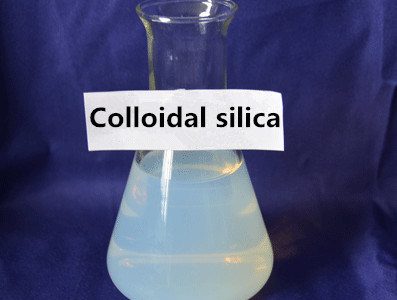0
-
An empty cart
You have no item in your shopping cart

Colloidal Silicate is defined as a stable suspension of microscopic particles or molecules distributed throughout a second substance known as a dispersion medium. They differ from other types of suspensions in that the colloid is evenly dispersed throughout the suspension, and does not separate or settle. Colloids may be any combination of liquid, solid, and gaseous colloids and dispersion media. Colloids are prevalent in a variety of common products and produced by various environmental and natural circumstances as well. They typically fall into one of the following categories:
Colloidal silica consists of silica molecules suspended in liquid, thereby forming a liquid sol. The process of creating colloidal silica is closely monitored to ensure that the silica molecules remain stable and separate within the liquid medium without collapsing into smaller component molecules or collecting into unstable silica gels. The liquid dispersion medium exhibits greater density than water and must be electrostatically treated for enhanced ionic stabilization. Colloidal silica is highly fluid with low viscosity. Uses for colloidal silica vary depending on the size of the silica particles in the solution and the modifiable pH, ionization, and surface charge. Applications of colloidal silica are vary widely. It can be used to enhance or direct the movement of substances within various processes. For example colloidal silica can be used to absorb moisture in industrial settings where moisture levels are high. Depending on the size of its constituent particles, colloidal silica may be used to enhance the movement of materials or to increase surface friction.
Colloids are prevalent in a variety of common products and produced by various environmental and natural circumstances as well. They typically fall into one of the following categories:
Shreenath Marketing offer high-purity level, higher surface area, customizable colloidal silicate products with committed quality.
HSN CODE NO. : 28391900
CAS No. : 7631-86-9
EC No. : 231-545-4
| Description | Specification |
|---|---|
| Physical State | Liquid |
| color | Transparent clearly / colorless |
| P.H | 10.5 to 12.5 |
| Soluble | 99.5 (+/- 0.01) |
| Sio2 (%) | 8 % to 45% |
| Surface Area(m2/gm) | 60 to 800 |
| Specific Gravity (gm/cc) | 1.5 to 1.10 @ 30°C |
| Viscosity (Cps) | 27@ 30°C |
| Particle Size (nm) | 40 to 10 |
| Total Solid (%) | 35 % to 60 % |
| Chemical Formula | Na2o * Sio2 * H2o |